HCL Digital Experience vs Liferay
May 28, 2023 | Author: Michael Stromann
2
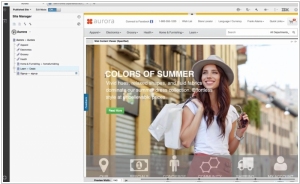
Create an intranet with authenticated access to core applications to improve employee productivity and training and help them get their work done. Help customers get secure, personalized access to their accounts and self-service options, and reduce service costs. Improve the secure exchange of information and applications with suppliers and partners.
HCL Digital Experience and Liferay are both powerful digital experience platforms, but they differ in their features, deployment options, and target audiences. HCL Digital Experience, formerly known as IBM WebSphere Portal, is an enterprise-grade platform that focuses on delivering personalized and engaging digital experiences. It offers a wide range of features such as content management, collaboration tools, customer experience management, and integration capabilities. HCL Digital Experience is designed to cater to large organizations with complex digital experience requirements, providing scalability, security, and robust customization options.
Liferay, on the other hand, is an open-source digital experience platform that emphasizes flexibility, extensibility, and collaboration. It offers features like content management, portal development, document management, social collaboration, and integration capabilities. Liferay is known for its developer-friendly approach, allowing users to build and customize their digital experiences using a variety of tools and frameworks. It targets organizations of all sizes and industries, providing options for both on-premises and cloud-based deployments.
See also: Top 10 Enterprise Portals
Liferay, on the other hand, is an open-source digital experience platform that emphasizes flexibility, extensibility, and collaboration. It offers features like content management, portal development, document management, social collaboration, and integration capabilities. Liferay is known for its developer-friendly approach, allowing users to build and customize their digital experiences using a variety of tools and frameworks. It targets organizations of all sizes and industries, providing options for both on-premises and cloud-based deployments.
See also: Top 10 Enterprise Portals
HCL Digital Experience vs Liferay in our news:
2021. Google and HCL team up for Digital Experience platform
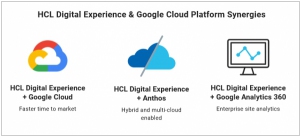
The HCL Digital Experience (DX) platform is now available on Google Cloud, offering clients access to the comprehensive solutions provided by Google Cloud, whether they choose to run their applications on-premises or on other cloud platforms. With this integration, HCL Digital Experience customers can continue leveraging the trusted and reliable features of HCL's Digital Experience platform, while also harnessing the global scalability, security, and flexibility offered by Google Cloud. Furthermore, HCL DX customers will have valuable insights into their customers' interactions with their website, thanks to seamless integration with Google Analytics 360 and HCL Unica Discover. This integration empowers businesses to optimize their customer journeys and enhance overall digital experiences.
2018. IBM sold Lotus Notes/Domino, Websphere Portal and other software to HCL
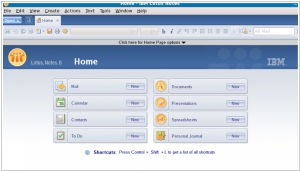
IBM is in the process of selling its renowned enterprise collaboration software, Lotus Notes, to the Indian company HCL for $1.8 billion. These products have been a significant component of IBM's enterprise business for a considerable period. However, last year, IBM began divesting the development segment to HCL while retaining control over sales and marketing. With the platform's development now outside of IBM's purview and the need for funds after a $34 billion expenditure on Red Hat, it appears that IBM decided it was no longer viable to retain any part of Lotus Notes in-house. On the other hand, HCL recognizes an opportunity to further develop the Notes/Domino business and is seizing it through this acquisition. HCL's interest in Notes/Domino surpasses what IBM has shown over the past decade, as they are heavily investing in rejuvenating the brand. Notes and Domino still maintain a presence in various enterprise sectors, particularly in EMEA (Europe, Middle East, and Africa). This strategic move aligns with IBM's shift towards advancing its cloud business in a different direction. The acquisition of Red Hat in October, in particular, demonstrates IBM's focus on embracing private and hybrid cloud deployments, whereas older software like Lotus Notes and Domino have limited relevance in this new realm.
2016. Liferay launched Digital Experience Platform
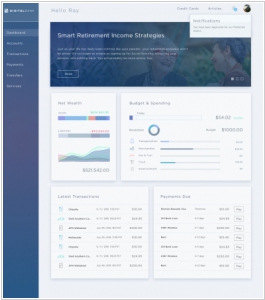
The Open source enterprise CMS provider, Liferay, has introduced its Digital Experience Platform (DXP). This platform is specifically designed to assist companies in creating and managing experiences that facilitate the entire customer relationship. It offers a comprehensive customer view that goes beyond marketing by integrating sales, marketing, support, and service teams. With DXP, companies can develop highly personalized experiences by targeting valuable information, offers, and resources to specific user segments and individuals. It also enables the creation of a unified customer profile that consolidates all interactions and significant data points. Furthermore, DXP provides access to engagement data such as views on video content, click-through rates on targeted materials, community participation, and social metadata.
2016. Liferay launches Digital Experience platform
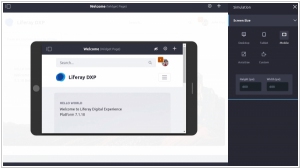
Historically recognized as portal software, Liferay has now ventured into the digital experience market with its latest offering, the DXP (Digital Experience Platform). This strategic shift represents a natural evolution for Liferay rather than a complete departure from its previous trajectory. As stated by Bryan Cheung, the CEO of Liferay, their customers consistently expressed a need for functionalities that went beyond the scope of traditional portal implementations. In response, Liferay would develop or integrate those features, prompting a reevaluation of their position in the market. The Liferay DXP consists of various components, with the portal platform serving as its foundation. The platform includes seamless integrations with numerous backend systems, including CRM, ERP, support, and others. This infrastructure empowers customers to create a wide range of customer experience solutions spanning web experiences, mobile experiences, and even hybrid online/offline experiences throughout the entire customer lifecycle. Please note that while the HTML tags and links were retained, they may not be properly rendered in this plain text format.
2015. Liferay partners with Red Hat to provide an open source portal solution
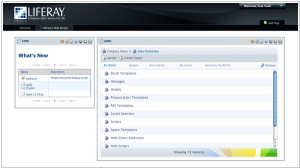
Liferay and Red Hat have joined forces to collaborate on an open-source portal that combines the capabilities of Liferay Portal and Red Hat JBoss Enterprise Application Platform (JBoss EAP). This product specifically targets companies seeking open-source options with enterprise-grade portal solutions. The collaboration also hints at the possibility of integrating with other Red Hat JBoss Middleware products in the future. From a business standpoint, this partnership is intriguing as Red Hat ceased offering new subscriptions to JBoss Portal in February 2015. However, Red Hat will continue to provide support for JBoss Portal until the scheduled end of the current release stream in March 2018. This new venture exemplifies Red Hat's ongoing commitment to the portal market, showcasing their dedication to serving customers in this domain.
2012. Open Text and Liferay create Dropbox clones
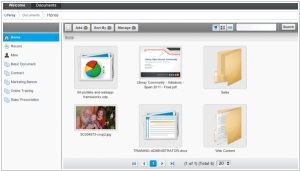
Could you have imagined just a few years ago that esteemed enterprise vendors like Open Text and Liferay, known for developing sophisticated enterprise content management systems (ECM), would emulate a seemingly straightforward consumer service like Dropbox? Surprisingly, it has become a reality. Even within large corporations that heavily rely on ECM, employees are ordinary individuals who desire a seamless working experience. They too seek systems that facilitate their work instead of hindering it, and many of them resort to using Dropbox despite IT administrators prohibiting its usage. As a result, a single solution emerges: to create a similar user-friendly service that abides by the corporate firewall. This very concept underlies the introduction of the new services: Open Text Tempo and Liferay Sync. These services enable file synchronization between desktop folders, web accounts, tablets, and smartphones, facilitating quick file sharing among colleagues while ensuring the files are stored securely on corporate servers. It's that simple.
2008. IBM-Microsoft shoot-out at the Enterprise 2.0 Conference
During the Enterprise 2.0 conference, we witnessed a series of semi-structured Social Software demonstrations that pitted IBM's Connections against Microsoft's SharePoint, moderated by Mike Gotta from the Burton Group. Interestingly, both vendors emphasized the portal aspect: IBM incorporated WebSphere Portal Server, partly to integrate its separate collaboration tool, Quickr, while Microsoft showcased various third-party Web Parts to compensate for the lack of native Social Networking services in SharePoint. IBM appeared more impressive for several reasons. They had a more focused demo team, which should not be underestimated, and Connections featured sleek Ajax interfaces, unlike SharePoint. Although Ajax does not automatically guarantee better usability, when implemented effectively, it simplifies complex interfaces. Social Software tools often come with intricate, power-user interfaces that have overwhelmed enterprise portal users for years. Social Software vendors assume that all users are information enthusiasts who want to navigate multi-column pages filled with small text and numerous links to related, popular, or recommended content. However, many colleagues may not share this preference. One participant questioned whether there were documented best practices to implement Lotus Connections without overwhelming the community. IBM also offered a sneak peek of upcoming alphaware, including a social network analysis module and feed reader, set to enter the market later in the year. In contrast, SharePoint came across as rather dull, and in the chat room, a lone Microsoft representative faced criticism from attendees. There is a discernible anti-Microsoft sentiment among consultants at the conference, which is expected at a "cool" event, but it might also stem from some resentment. Many enterprise attendees I spoke to mentioned that they were experimenting with SharePoint before exploring other tool options in the market. Despite its flaws as a Social Software platform, SharePoint is perceived as straightforward. While IBM's Connections product showcased its strengths, our upcoming Enterprise Social Software Report 2008 will highlight the significant infrastructure requirements it entails.
2006. Mainsoft brings .Net to WebSphere Portal
Mainsoft released new software on Wednesday that aims to bridge the gap between .Net and Java applications running on IBM's WebSphere Portal server. Due to the different programming languages used, integrating applications created with Microsoft's .Net tools and Java programs has been a challenge. However, with Visual MainWin for J2EE, Portal Edition, developers now have the ability to recompile existing Microsoft ASP.Net Web applications, enabling them to run seamlessly on IBM's WebSphere Portal. This integration of Java portal and .Net programs on a single server, supported by IBM, enhances application performance for end users, according to Jenna Dobkin, Mainsoft's director of marketing. Additionally, Mainsoft's solution leverages Novell's open-source Mono software to ensure compatibility between .Net applications and Java portals.
2005. IBM tunes high-end WebSphere server
IBM announced on Thursday that it will release a new version of its WebSphere application server called WebSphere Extended Deployment version 6 at the end of August. This high-end application server is built with utility computing-style features, allowing it to efficiently run multiple applications by automatically distributing computing workloads across multiple hardware servers. The latest edition offers improved tools for job prioritization, supports transaction-intensive and batch workloads, and can run non-WebSphere programs. It also enables software updates without disrupting applications and enhances performance through improved data caching.
2005. IBM beefs up WebSphere for integration
IBM has announced its plans to enhance the standards-based integration tools in the upcoming version of its WebSphere server software, catering to the consistent and high demand from corporate customers seeking effective software solutions to connect diverse systems. According to Robert LeBlanc, the general manager of IBM's application and integration middleware division, the forthcoming release of WebSphere will include support for the latest Web services communication protocols and will further build upon the recently introduced machine-to-machine messaging software. In addition, IBM is exploring the development of specialized versions of WebSphere to target specific purposes. Already, the company has a WebSphere application server specifically designed for radio frequency identification (RFID) applications, as well as a "pervasive" edition that delivers data to embedded and handheld computing devices.



